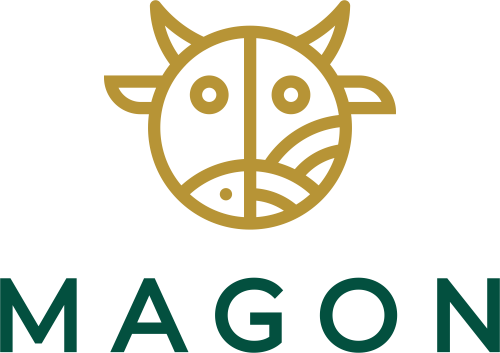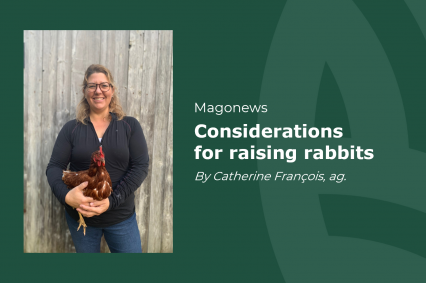The production of rabbits is a marginal production compared to other livestock.
Whether it is for meat production, fur production, or as a pet, several elements are necessary for the well-being of rabbits. It is this welfare that will allow the animals to better express their behaviours, and this will translate into better productivity. Here is an overview of rabbit raising and the elements necessary for their well-being.
Housing
A well-designed housing allows the animal to grow and reproduce well. The cage is the space in which the animal must carry out various activities: feeding, drinking, resting, nesting and nursing, and making its droppings. The area should be designed and maintained to minimize the risk of injury and allow the observation of all animals. The rabbit must be able to sit in normal resting postures (ventral and lateral) with its ears erect and not touching the ceiling of the cage.
The breeding or maternity cage is the cage in which a female rabbit gives birth and raises her young until weaning. It must be equipped with a nesting box where the female rabbit will give birth and nurse her babies for at least the first three weeks. The nesting box must be removable so it is easy to clean.
The growing cages are intended for the breeding of weaned rabbits. The rabbits are raised in groups from weaning until they are ready to be sold or slaughtered. When kept in a group in the same cage, the rabbits must have enough space to rest on the cage floor at the same time. High stocking density result in a slowdown in growth, uneven weights and encourage fighting and injury. The cage floor must allow the rabbits to be comfortable and free of foot injuries, while allowing feces to pass through.
Air circulation, temperature and relative humidity are three environmental factors that must be controlled to promote the health and welfare of rabbits. Air quality must be managed to reduce the risk of heat stress, and to minimize dust and moisture accumulation. If the temperature is too high, rabbits will decrease their feed intake, their growth will decrease and there will be an impact on reproduction.
Feeding
Feeding is an essential part of production and has its own particularities. Rabbits must have daily access to quality, nutritionally balanced feed to meet their physiological needs at each stage of production. Rabbits must always have water and food available. Feeders and drinkers should be placed in such a way that the rabbits have easy access to them and that the food and water are not contaminated by feces.
Rabbits have the particularity to perform caecotrophy, which means that they ingest their feces to extract the elements that could not be assimilated during the first digestion. This allows the rabbit to recover the nutrients and micro-organisms they contain.
As with humans, the water rabbits drink must be potable. If the water is unsafe, the rabbit will not drink, even if it is thirsty. Growing rabbits usually drink 1.5 to 2 times more than the amount of food they eat. Nursing rabbits drink 2 to 2.5 times more water than they eat food. Rabbits eat and drink small quantities, but they do it often: 25 to 30 times in a 24-hour period. The temperature of the water must also be monitored, as rabbits do not drink when the water is warm.
Health and sanitary management
Health is a particularly important issue in rabbit’s husbandry. Health problems can cause pain and discomfort to the animal, which affects its well-being. The health of the rabbits should be assessed daily by the person providing care. The caregiver must be able to assess whether the rabbits are behaving normally and detect signs of illness, injury, and stress. If an animal is injured, it should be isolated from the others while it recovers. If there is no possibility that the animal will recover, then euthanasia is considered putting the animal out of its misery.
When new individuals are introduced into the husbandry, they must be free of obvious signs of disease. They should be separated from the rest of the animals for at least 14 days to observe if the new rabbits develop symptoms of any disease.
Cleaning and disinfection of the rabbits' house and equipment contribute to effective health management and reduce the risk of disease incidence. Farm equipment should be cleaned and sanitized between flock. Measures should be taken to keep pests (mice, insects, birds, predators) away from the rearing area and from the feed storage area.
Transportation and handling
Human-animal contact is an important factor in animal welfare and productivity. Properly handled rabbits have less stress and are less likely to be injured. It is therefore necessary to handle them with care. The animal should never be handled by the ears, it should be picked up by the neck, behind the ears and supported when being carried.

